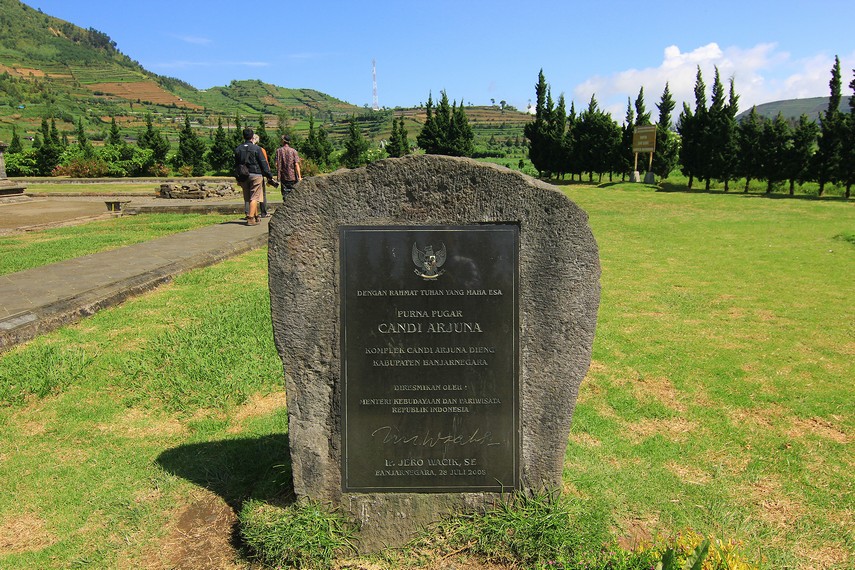Located in the Java Sea, approximately 83 kilometers from the northern coast of Jepara, Karimunjawa Island is one of Indonesia's exotic marine tourism destinations. Known as the "Caribbean of Java," this archipelago offers the charm of white sandy beaches, crystal clear waters, and diverse marine life. Karimunjawa is a perfect destination for snorkeling and diving enthusiasts, and those seeking to experience the beauty of pristine tropical nature. Karimunjawa consists of 27 small islands, of which only a few are inhabited, while most are uninhabited, surrounded by crystal clear waters. This makes Karimunjawa a favorite destination for snorkeling, diving, and enjoying the beauty of the beaches. Karimunjawa has been designated a National Park by the Jepara government since March 15, 2001. Karimunjawa is home to coral reefs, mangroves, coastal forests, and nearly 400 species of marine life, including 242 species of ornamental fish. Wonderful Indonesia: Some of the rare fauna...
The Dieng Plateau has a very large temple area. It is estimated that the temples in this area occupy an area of 90 hectares and only a small part of the temples have been restored. Of the many temples on the Dieng Plateau, the Arjuna Temple Complex is the most extensive temple area.
Located in Dieng Kulon Village, Batur District, Banjarnegara Regency, the Arjuna Temple Complex has an area of about 1 hectare. In this complex, there are five temple buildings, namely Arjuna Temple, Semar Temple, Srikandi Temple, Puntadewa Temple, and Sembadra Temple. Apart from Semar Temple, the other four temples are the main temples used as places of worship.
Judging from the shape and ornaments found in each temple, the four temples are thought to have been built at different times. Arjuna Temple was built the earliest, while Sembadra Temple was built the latest.
This estimation is based on the difference in temple building styles. Arjuna Temple is still very thick with the style of temples from India. Meanwhile, the Sembadra Temple already shows a very strong influence of local culture. This influence can be seen from the niches in the temple. Indian-style temples have niches that protrude inward, while the influence of local culture has niches that protrude outward.
The temple complex was first discovered in the 18th century by a Dutch soldier, Theodorf Van Elf. When first discovered, the condition of the temple was waterlogged. Efforts to save the temple were first made by the British H. C. Corneulius, about 40 years after the temple was discovered. His efforts were then continued by a Dutch national named J. Van Kirnbergens.
Broadly speaking, the four main temples in this complex have the same ornaments. In each temple, you can find penil (ornaments on the stairs, like a handrail), kala (a giant face without lower jaw found at the top of the door), makara (placed on the sides of the door and believed to be able to repel evil), jalatmara (water channel to drain water from the inside of the temple to one side), istadewata (found at the top of the temple and believed to be the place where the gods enter), and antefix (ornaments found at the end of each side). In addition, in each temple, you can also find diksa (a path for people to surround the temple before entering the main temple area).
Arjuna Temple, Puntadewa Temple, and Sembadra Temple are temples made to worship Lord Shiva. While Srikandi Temple was built to worship Trimurti (three gods) namely Shiva, Brahma, and Vishnu. When visiting the Arjuna Temple Complex, you will not find the usual statues that decorate temple buildings. You will only see empty spaces that are often used as places to place statues.
Most of the statues from this temple complex are kept in the Kailasa Museum, which is located not far from the temple complex. Meanwhile, some of the other statues have been lost.
Of the four main temples in this complex, only Arjuna Temple has a facility temple, Semar Temple. The facility temple itself is a temple that is used as a gathering place or waiting for the devotees before entering the main temple.
Arjuna Temple, the main temple in this complex, is also estimated to be the oldest temple built in the 8th century AD by the Sanjaya Dynasty of Ancient Mataram. In addition to the five temples, about 200 meters west of the Arjuna Temple Complex, there is the Setyaki Temple. Setyaki Temple consists of two buildings, but only one building is currently standing. It is also incomplete because the top of the temple has not been installed and the other building is only the base of the building.
Setyaki Temple is also a temple built to worship Lord Shiva. Looking at the niches and building style, Setyaki Temple is estimated to have been built during the same period as Arjuna Temple.
The Arjuna Temple complex is usually used as a place for Galungan. Sometimes, this complex is also used as a place to perform ruwatan anak gimbal. The entrance ticket to this temple complex is IDR 10,000. With this ticket, you can visit the Arjuna Temple Complex, Sendang Sedayu, Sedang Maerokoco, Dharmasala, and Sikidang Crater.



Comments